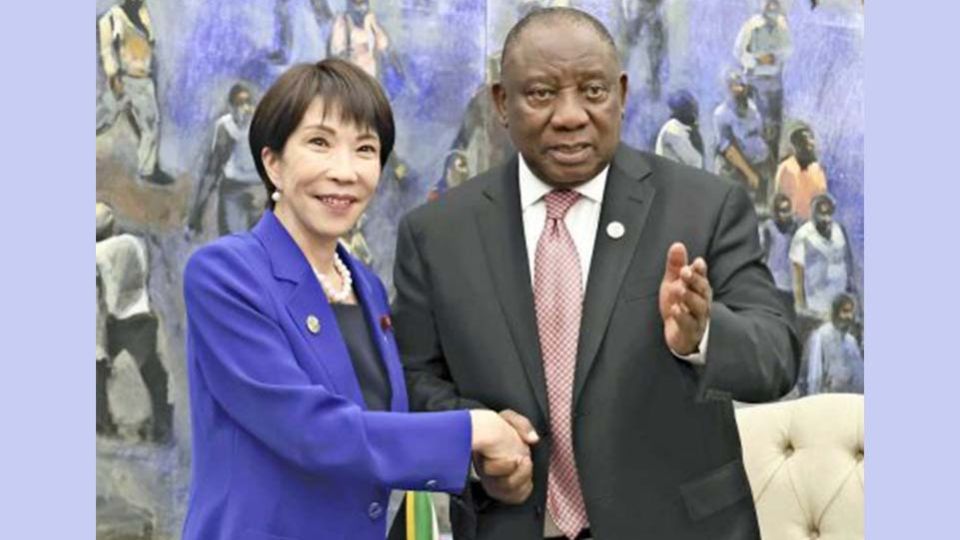November 26, 2025
TOKYO – With a little over a month having passed since Prime Minister Sanae Takaichi took office, her approach to leadership emphasizes a sense of speed and originality mainly in foreign and economic policies, as she noticeably conveys messages in her own words.
However, her frankness sometimes backfires. Within the government and ruling parties, the risks of the “Takaichi style” are emerging as a future challenge.
After completing the full schedule of the Group of 20 summit held in South Africa, Takaichi spoke with reporters on Sunday at the hotel she was staying at. “I was able to meet directly with many leaders when over 60 countries and international organizations gathered here,” she said. “It was an extremely meaningful visit.”
Including the G20 summit, Takaichi has been busy actively building relations, using the succession of international conferences taking place soon after she took office to meet with leaders one after another.
According to a government source, “Takaichi decided beforehand, for example, to shake hands with every leader in attendance, and went through with it at meetings.”
Proclaiming a continuity with former Prime Minister Shinzo Abe’s stances, Takaichi, in particular, built a personal relationship of trust with U.S. President Donald Trump during his visit to Japan, demonstrating the strength of the Japan-U.S. alliance both domestically and internationally.
Her approach to promote foreign and security policies with the Prime Minister’s Office leading the way, which seems to be conscious of Abe’s style, can be seen by how she expressed her intention to revise three security documents ahead of schedule.
Takaichi advocates “responsible and proactive public finances.” Her intentions were reflected top-down in the comprehensive package of economic measures totaling ¥21.3 trillion, which was approved by the government at a Cabinet meeting on Friday, just one month after she took office.
Partly because Takaichi directly instructed that policies that were not part of the initial plan be included, such as the provision of ¥20,000 in cash per child aged 18 or younger, the resulting package was significantly larger than the previous year’s measures.
“The policy catchphrases are being communicated effectively, and the public’s reception is positive,” said a Cabinet minister.
However, Takaichi’s Diet remark regarding a Taiwan contingency and Japan’s “survival-threatening situation” went into more concrete detail than any previous prime minister had stated, provoking a backlash from China and cooling bilateral relations.
Criticism has emerged from within the ruling coalition, with one Liberal Democratic Party senior member saying, “[Takaichi] will not be able to act smartly on the diplomatic stage without separating her true feelings and her official positions.”
With economic policies, maintaining fiscal discipline while monitoring financial markets remains a challenge.
The future of the coalition government of the LDP and the Japan Innovation Party, which supports Takaichi, also holds potential turbulence.
Cautious voices persist even within the LDP regarding the JIP’s strong demand for reducing the number of House of Representatives seats. Meanwhile, discontent simmers within the JIP, with one executive member stating, “The LDP isn’t keeping pace with the speed of our policies.”
As the ruling coalition holds a minority in both houses of the Diet, gaining understanding from opposition parties is also essential, possibly creating situations in which Takaichi’s leadership will be needed.

